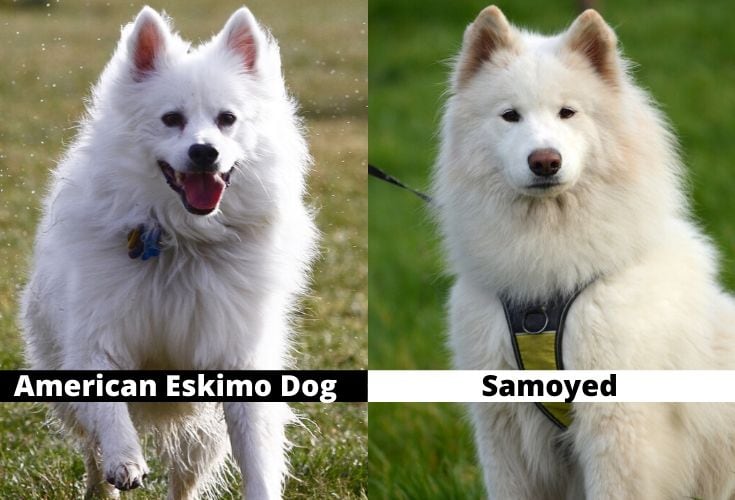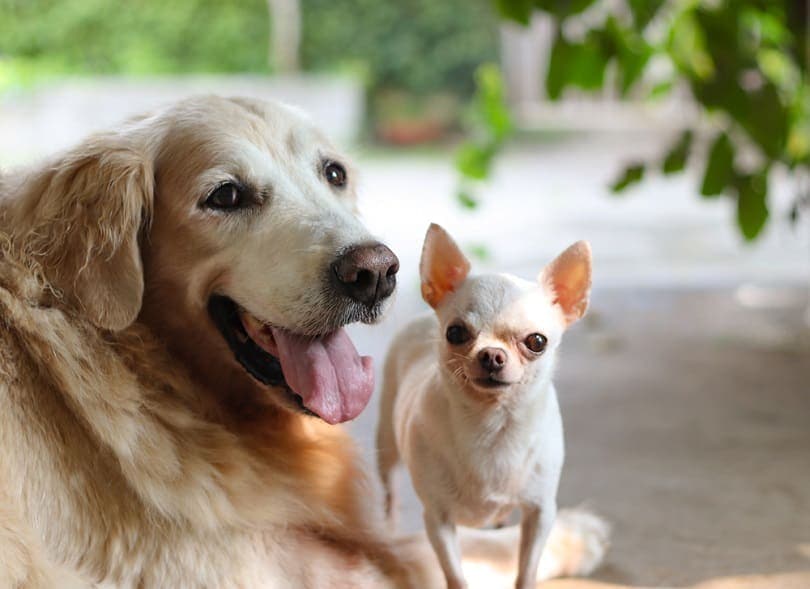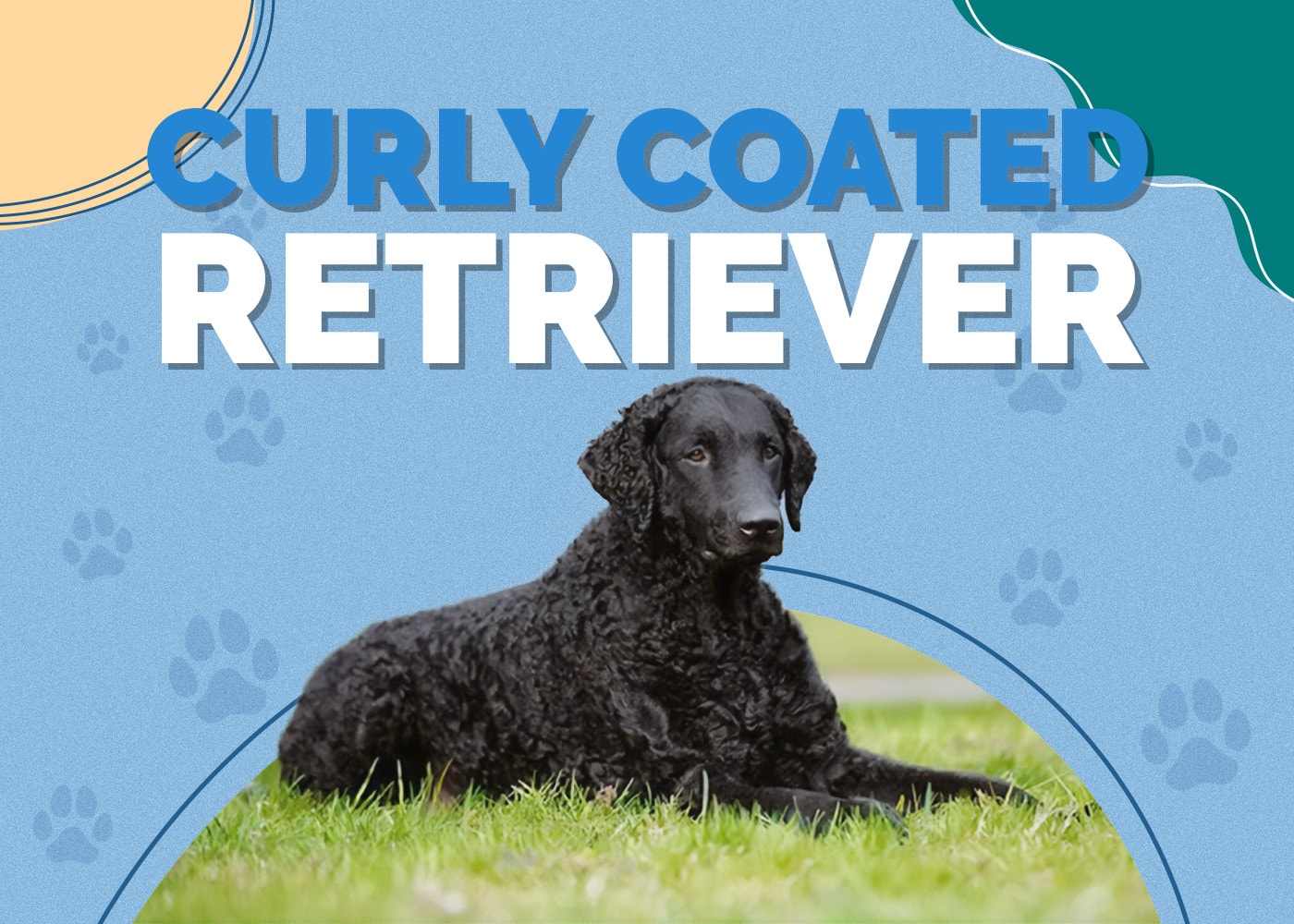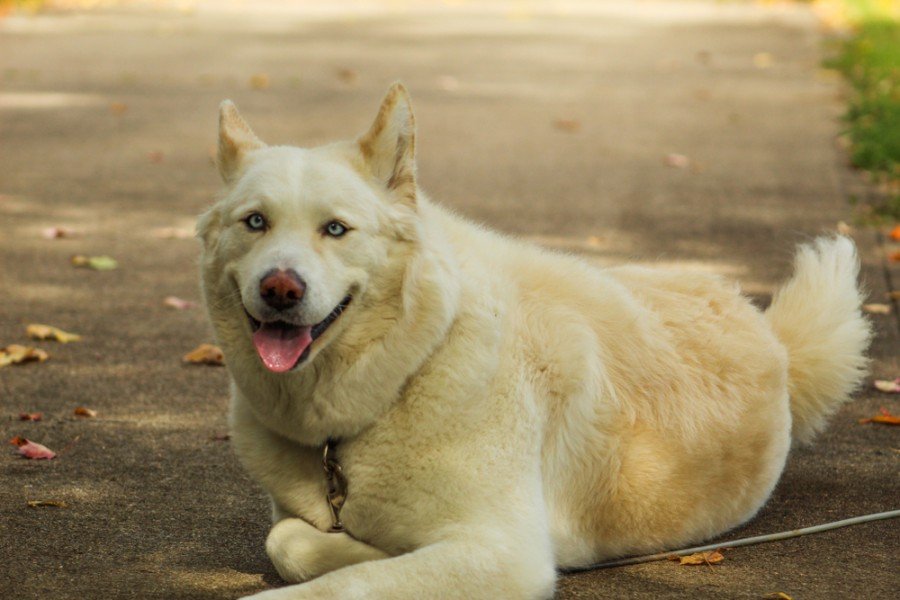American Eskimo Dog vs. Samoyed: What’s the Difference?

Updated on
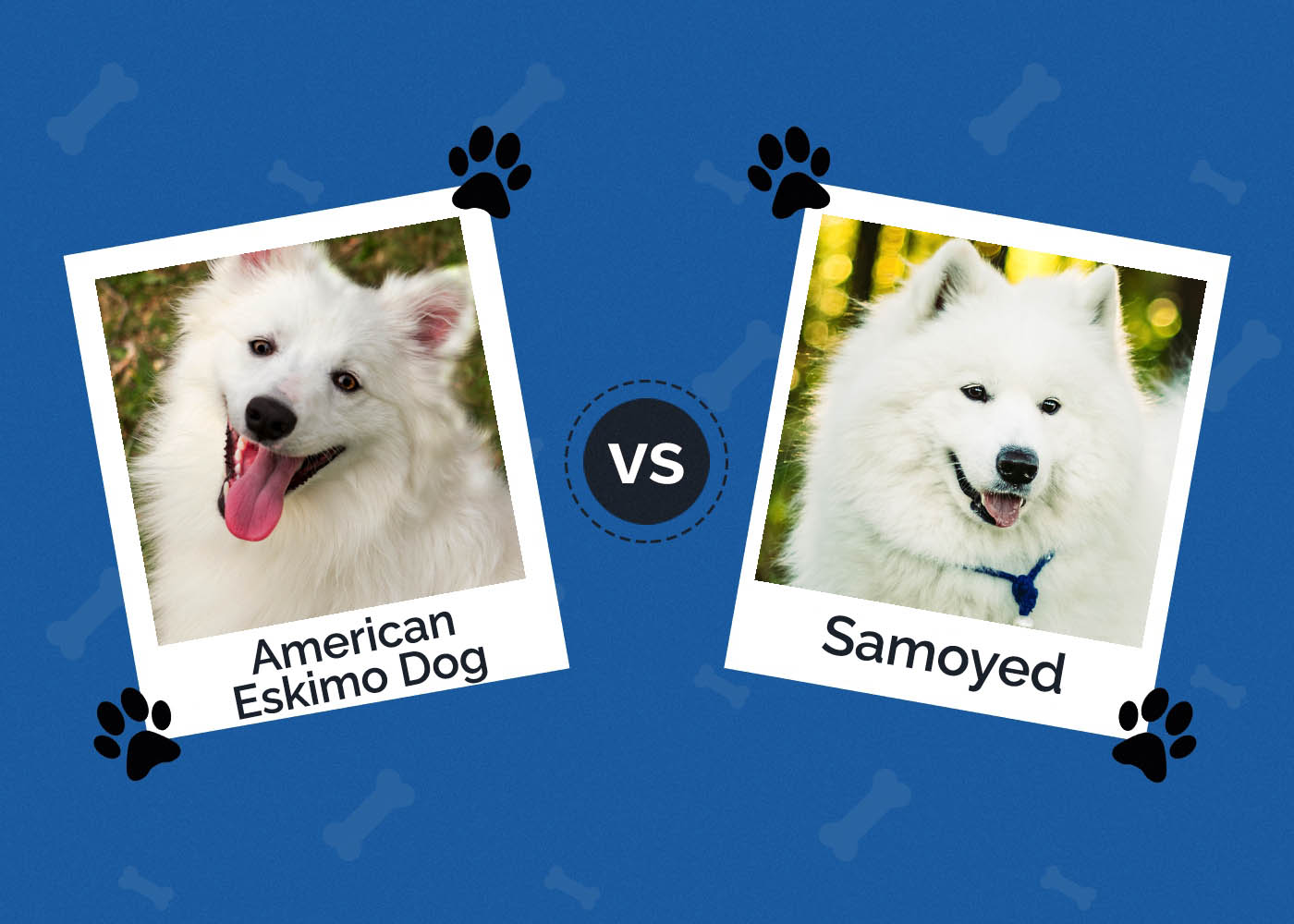
What’s white, fluffy, and always has a smile on its face? Depending on who you ask, the answer is likely one of two things: the American Eskimo Dog or the Samoyed. Despite their similar appearance, though, these two dogs are far from the same breed.
Even if you know each of these breeds exist, you’ll probably have a hard time telling one apart from the other! So, what differentiates the American Eskimo Dog from the more popular Samoyed? And why are these two distinct dog breeds so strikingly similar when it comes to their looks?
Before we break down the key differences of the American Eskimo vs. Samoyed, let’s take a brief look at their defining traits and characteristics.
Visual Differences
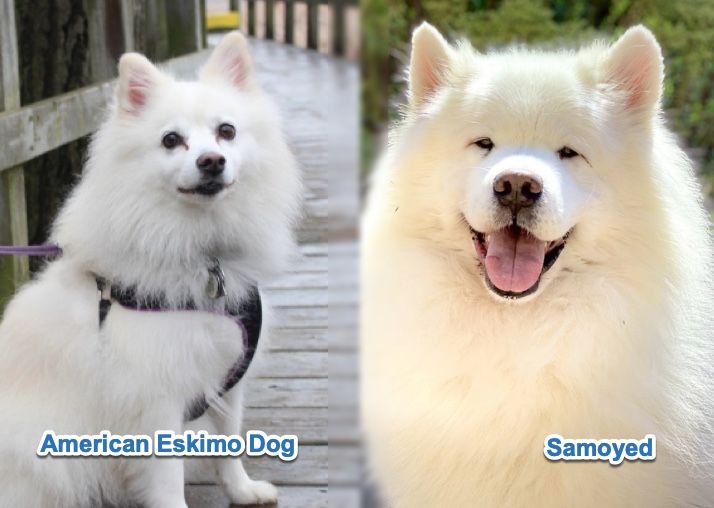
A Quick Glance
- Size: 9-12 inches (Toy), 12-15 inches (Miniature), 15-19 inches (Standard)
- Weight: 6-10 pounds (Toy), 10-20 pounds (Miniature), 25-35 pounds (Standard)
- Lifespan: 13-15 years
- Exercise: At least 45 minutes per day
- Grooming: At least twice per week
- Family-friendly: Yes
- Trainability: Very trainable
- Size: 19-23.5 inches
- Weight: 35-50 pounds (female), 45-65 pounds (male)
- Lifespan: 12-14 years
- Exercise: At least 1 hour per day
- Grooming: At least twice per week
- Family-friendly: Yes
- Trainability: Slightly stubborn
American Eskimo Dog
Don’t let the name fool you. Eskimo communities had nothing to do with the development of this dog breed.
The American Eskimo Dog actually originates from the German Spitz, brought over to North America by German immigrants during the 17th Century. Traditionally a working farm dog, some German Spitz found popularity in traveling circus acts and other displays of dog training and performance.
With the start of World War I, however, North America became rather prejudiced against all things Germanic. To preserve the breed’s showy reputation, breeders chose to rename it. Because of the thick, white fur, “American Eskimo Dog” was the final choice.
While the American Eskimo Dog, sometimes called an Eskie, boasts a charming appearance and personality, the breed isn’t commonly found in today’s average households. In fact, the American Eskimo Dog ranks just 122 out of 195 in the American Kennel Club’s breed popularity ranking.
Actually, this lack of interest is a bit of a mystery. After all, the breed offers beauty, friendliness, and trainability unmatched by many of the world’s more popular breeds.
Physical Appearance
The most striking physical trait of this breed is its long, white fur. Breaking up the cloud-like appearance, though, are a black nose, eyes, and lips. While all-white is the most common coloration found in the Eskie, some individuals also have cream-colored markings. Most American Eskimo Dogs have a lion’s ruff around the neck and a tail that curves up over the back.
The American Eskimo Dog comes in three different sizes: toy, miniature, and standard. Respectively, these measure 9-12 inches, 12-15 inches, and 15-19 inches tall and weigh 6-10 pounds, 10-20 pounds, and 25-35 pounds.
Temperament
There’s one thing that every breeder and trainer will tell you about the American Eskimo Dog: they are extremely social animals. Along with developing emotional problems, a lonely American Eskimo Dog will become bored and can get destructive if not given adequate attention.
Thanks to its history in circus performing, the breed is considered one of the most trainable dog breeds in existence. Not only will the American Eskimo Dog jump at the chance to follow commands, but this dog is remarkably compatible with children. However, the breed’s intelligence also means they require regular mental and physical stimulation.
This is not a dog you can leave on its own for extended periods. But if you include your Eskie in family activities and bonding, you’re sure to have a happy and well-socialized pup on your hands.
Health
On average, the American Eskimo Dog has a lifespan of 13-15 years and is an all-around healthy dog. Still, the breed is susceptible to common ailments like hip dysplasia and patella luxation, diabetes, and progressive retinal atrophy.
Grooming
Because of the long, thick coat, the American Eskimo Dog thrives in cold weather. However, this dog also requires brushing twice a week to prevent excessive shedding or matting. During the spring, when the breed loses its winter coat, these grooming needs can easily double.
While many owners believe shaving their long-haired dog is the best option in hot weather, the Eskie’s double coat can actually help protect against the heat. Instead, try to keep your dog in the air conditioning as often as possible while monitoring their water intake and time spent outside.
Samoyed
Unlike the American Eskimo Dog’s deceptive history, the Samoyed really does come from one of the coldest places on Earth. In fact, the breed’s name comes from the Samoyede people, who lived in parts of Siberia that regularly reach -60 degrees Fahrenheit!
Although the Samoyed started out as versatile hunting, sledding, and guard dogs, the breed really hit its stride when the Samoyede switched from hunting to raising reindeer. Instead of pursuing their food through the harsh tundra, the Samoyede began breeding their dogs to protect their reindeer herds.
But how did the Samoyed breed find its way into households around the world? Understandably, the breed gained favor with 18th Century Arctic explorers who adapted the Samoyede’s herding dogs to their own needs. Eventually, the Samoyed found its way back to Britain, where its beauty and temperament quickly earned a reputation as an excellent show and companion dog.
In the 20th Century, the first Samoyed was recognized by the American Kennel Club — and the rest is history!
Physical Appearance
Like the American Eskimo Dog, the Samoyed is fluffy and white. They boast black eyes, lips, and nose, a ruffed neck, and an upcurved tail. The breed’s most famous physical feature, though, is its smile. The upturned mouth of a Samoyed is both cute and functional, preventing drool from freezing on its lips (however, the Eskie also features a fairly upturned smile of its own).
Instead, the most obvious difference between the American Eskimo Dog and Samoyed is size. On average, the Samoyed ranges from 19-23.5 inches tall, with males trending a little bigger than their female counterparts.
As mentioned, the Eskie caps off at just 35 pounds. Meanwhile, the Samoyed almost doubles that number! Male Samoyeds range from 45-65 pounds and females from 35-50 pounds, though the thick coat can make them look much larger.
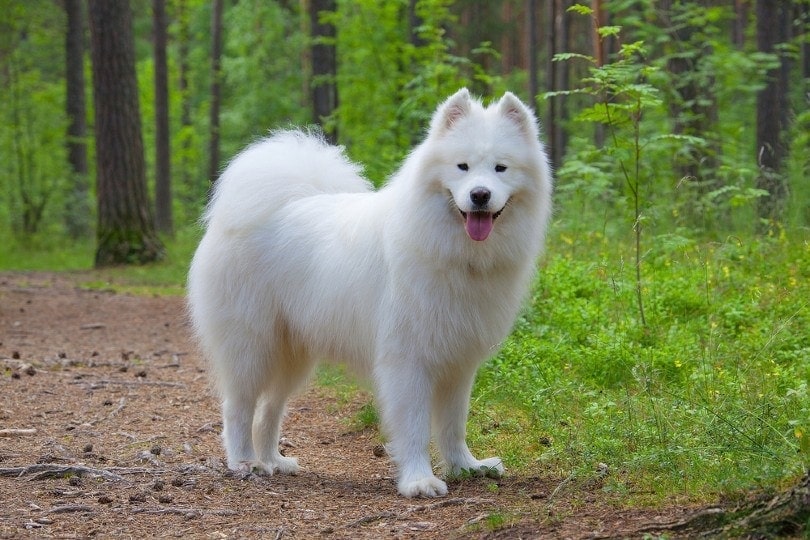
Temperament
Although the Samoyed is a hard-working breed, they require a close relationship with their owners to really thrive. The breed demands a high degree of bonding and affection from their owners and cannot be left alone for long periods. If their needs are not met, a Samoyed will become destructive and mischievous.
The Samoyed is a highly intelligent breed. However, they are also known for their independence and stubbornness. Because of this, the breed requires a firm training approach for success.
Health
Samoyeds have a similar lifespan to Eskies, averaging roughly 12-14 years. They also have very similar health concerns, including hip dysplasia, diabetes, and progressive retinal atrophy.
However, the Samoyed is also susceptible to more serious conditions like hypothyroidism and cardiac disease. As with any purebred dog, great care should be taken when choosing a responsible breeder.
Grooming
The grooming needs of the American Eskimo Dog and Samoyed are practically identical. Your Samoyed’s coat should be brushed at least twice per week, with more frequent dematting and combing during shedding seasons.
The Samoyed is bred for extreme cold and doesn’t exactly enjoy spending time in the hot sun. With adequate shade, water, and time indoors, though, you can absolutely raise a happy and healthy pup in warmer climates. As with the Eskie, your dog’s coat should be kept long even in hotter months.
American Eskimo Dog vs. Samoyed: Which Is Right for You?
All in all, these two breeds are remarkably similar, even if their origins are quite different. While the American Eskimo Dog is notably smaller and more receptive to training, both breeds produce a relatively healthy and happy dog.
Are you considering adding one of these adorable pups to your family? Have you owned an American Eskimo Dog or Samoyed in the past? What is your favorite out of Samoyed vs. American Eskimo? If you have the time and dedication, either of these dogs will make an excellent addition to your household.
See Also:
- Are American Eskimo Dogs Good for First-Time Owners? What You Need To Know!
- American Eskimo vs. Pomeranian: Choose the Right One For You
Featured Image Credit: (L) KA_Richer5171321, Shutterstock | (R) Grisha Bruev, Shutterstock



